Ireland is part of England, isn’t it? Ireland is not in the EU and there is a war with Northern Ireland? There are many interesting theories about the emerald island in the Atlantic. In this article we want to shed some light on the subject. Let’s start with the status quo:
Page Contents (click line to jump the text)
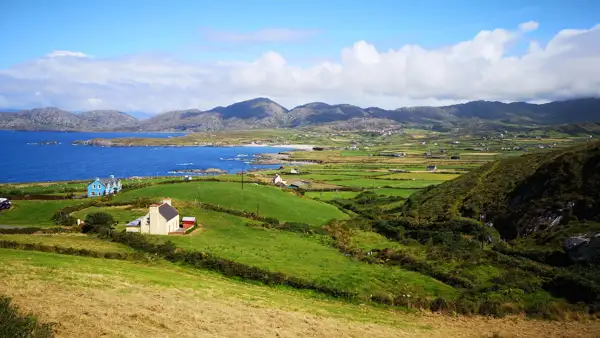
The Republic of Ireland is not part of Great Britain
The island of Ireland is home to two separate countries. In the north-east of the island of Ireland there is a relatively small area that is not an independent state, but is part of the United Kingdom of Great Britain and Northern Ireland as a semi-autonomous territory – that is Northern Ireland.
The vast majority of the island of Ireland belongs to the Republic of Ireland. The Republic of Ireland is an independent and free state and a member of the EU. Since Great Britain and Northern Ireland left the EU as part of the Brexit, the border between the Republic of Ireland and Northern Ireland has become the EU’s external border since January 2021.
Historically, however, this has not always been the case. The island of Ireland has had to endure numerous invaders: Celts, Vikings, Normans, Anglo-Saxons and English – the list of conquerors is long and Irish history is full of wars and occupations. But let’s start in the recent past and shed some light on the Northern Ireland conflict:
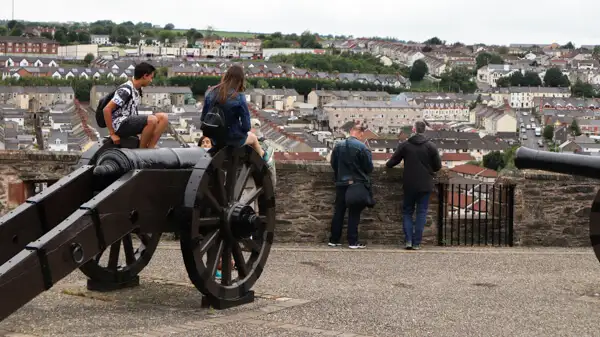
Is there a war in Ireland?
There is currently no war on the island of Ireland, nor is there any unrest. While Ireland is one of the safest places to travel in Europe and there is no unrest in Northern Ireland at the moment, it was quite different in Northern Ireland in the 70s to 90s: many of us still remember violent unrest reported in the news in the 70s and 80s – that was the Northern Ireland conflict:
The Northern Ireland Conflict
In the Northern Ireland conflict, Irish Catholic republicans sought to achieve the separation of Northern Ireland from Great Britain and the union of Northern Ireland with the Republic of Ireland. The English and Scottish Protestant unionists, on the other hand, tried to ensure that Northern Ireland remained in the United Kingdom of Great Britain and Northern Ireland.
The conflicts escalated into civil war-like power struggles that were violently fought out over many years, from 1969 to 1998. The Good Friday Agreement of 1998 finally ended the violent clashes.
Why Brexit is still so difficult to implement in Ireland today
As part of the so-called Brexit, Great Britain, i.e. England with Wales, Scotland and Northern Ireland, has left the EU. As a result, the border between the Republic of Ireland and Northern Ireland has become the EU’s external border as of 1 January 2021.
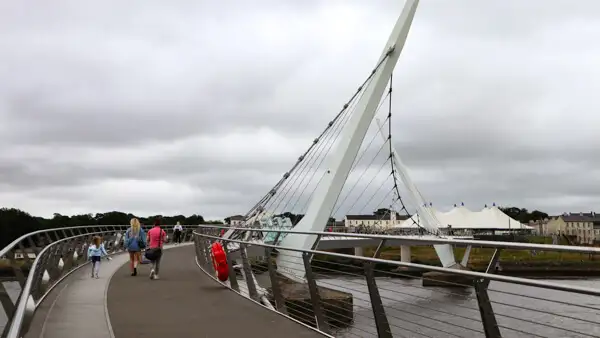
This has also revived the discussion about a possible unification of Northern Ireland with the Republic of Ireland. The discussion today is largely peaceful, although there have been isolated not entirely peaceful protests in Northern Ireland on the issue. Concerns about a resurgence of violent unrest therefore persist in Northern Ireland.
The two Irish countries have traditionally been very close neighbours. A border is physically almost impossible to detect and the crossing is completely free and unhindered. Northern Irish work in Ireland and Irish work in Northern Ireland.
In addition, there are numerous trade relations in both directions. The implementation of an EU external border between the two countries would be an organisational tour de force and would put extreme strain on the relationship between the two countries. It could also provoke possible unrest on the part of the Catholic Northern Irish.
In order to prevent renewed unrest in Northern Ireland, special regulations for the implementation of the EU’s external border on the island of Ireland have therefore been agreed. According to the agreement, the customs border should be crossed outside Northern Ireland, i.e. at sea.
However, Northern Ireland finds it difficult to implement a customs border at sea and thus between Northern Ireland and England and Scotland, because unionists loyal to England fear that this would split them off too much from England.
And so the implementation of the EU’s external border on the island of Ireland or somewhere at sea off the island, which became necessary as a result of Brexit, has still not been satisfactorily resolved and implemented. The long-ago Northern Ireland conflict casts its long shadows into the present.
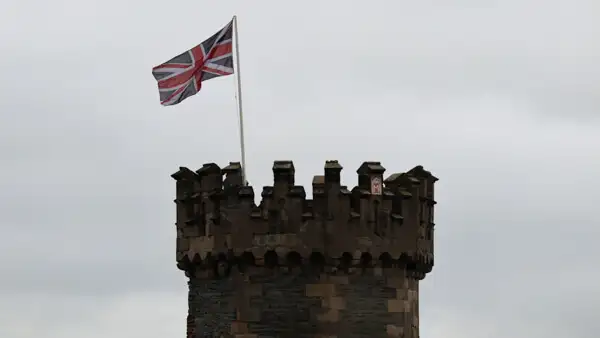
Was Ireland once a British colony?
Britain did indeed dominate Ireland in various forms over several centuries. For example, Ireland was last under British rule as part of the United Kingdom of Great Britain and Ireland from 1801 to 1921.
In the Irish Wars of Independence of 1919-1921, Ireland forcibly broke away from British domination and in 1922 proclaimed the Free State of Ireland, to which 26 of the 32 Irish counties belonged. The Free State of Ireland, but still part of the British Commonwealth, eventually became the present Republic of Ireland in 1949, finally severing all British ties.
The remaining 6 counties in the province of Ulster remained with Great Britain and became the semi-autonomous British province of Northern Ireland in 1921.
Thus, with the independence of Ireland, the division of Ireland had also occurred. But why did today’s Northern Ireland remain with Great Britain?
What is it about Protestants and Catholics – and are there religious conflicts in Ireland?
The denominational issue goes back to England’s power politics in Ireland in the 17th century: Since the Christianisation of Ireland in the Middle Ages, the Irish have been predominantly Catholic. The English denomination is predominantly Protestant.
In the 17th century, under English domination, many Englishmen and Protestant Scots loyal to England had been settled in Ireland to better control the ever rebellious Catholic Irish.
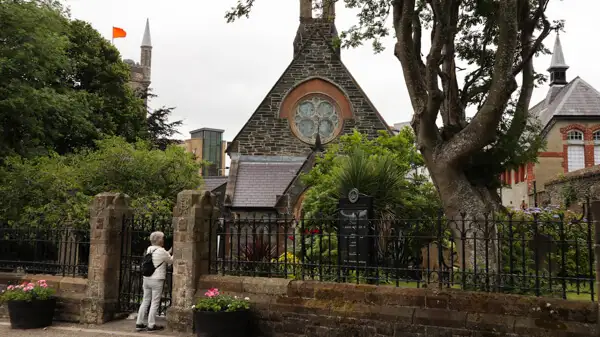
Most of these Protestant English and Scots settled in the old province of Ulster in the north-east of the island of Ireland and eventually formed a majority in the population there. When Ireland declared independence from Britain in 1922, these descendants of English and Scottish settlers wanted to continue to belong to their mother country England.
As they formed the majority of the population in their counties, these 6 provinces seceded from Ireland and later Northern Ireland was founded, which still belongs to Great Britain today.
Thus, the Northern Ireland conflict was mainly about whether Northern Ireland should belong to Ireland or to Great Britain. It was not really about religious differences.
However, ethnic descent and perceived belonging to England or Ireland go hand in hand with the denominational affiliation and cultural group membership of the population.
Therefore, to this day, on the one hand, people speak synonymously of Unionists, Protestants and Ulster-Scots, and on the other hand, they speak synonymously of Catholics or Irish.
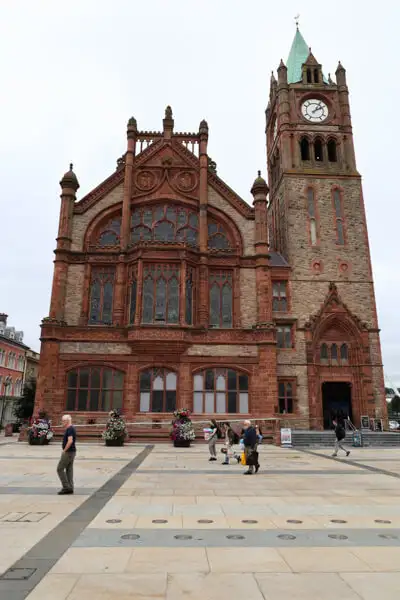
Is travelling to Ireland or Northern Ireland unsafe or difficult?
Ireland is one of the safest countries in Europe and Northern Ireland is also safe to visit on holiday.
As the Republic of Ireland is in the EU, an identity card is sufficient for EU citizens to enter the country. The Irish currency is the euro and speed limits on the roads are given in km/h. However, left-hand traffic is the rule throughout the island. However, left-hand traffic applies throughout the island, in Ireland and in Northern Ireland.
As Northern Ireland is no longer in the EU since Brexit, EU citizens should also carry their passport there. Entering Northern Ireland via the open border is completely hassle-free. The Northern Irish currency is the pound and speed indications are in miles per hour (mph).
Apart from these minor differences, Irish and Northern Irish people travel completely freely across the island. We motorbike travellers and tourists can enjoy this freedom of travel just as relaxed.
More interesting articles for you
15 TIPS FOR BOOKING ACCOMMODATION IN IRELAND
WHY GO TO IRELAND OF ALL PLACES? – 9 GOOD REASONS FOR A TRIP TO IRELAND
LEFT-HAND TRAFFIC IN IRELAND – 15 THINGS YOU SHOULD KNOW FOR YOUR HOLIDAY TRIP!
Photo credits cover photo: Chimneys and a British flag in Londonderry/Derry, photo by Ulrich Knüppel-Gertberg (www.irland-insider.de, www.ireland-insider.com)